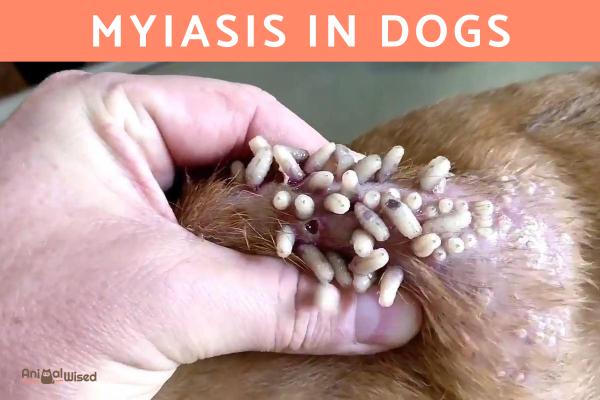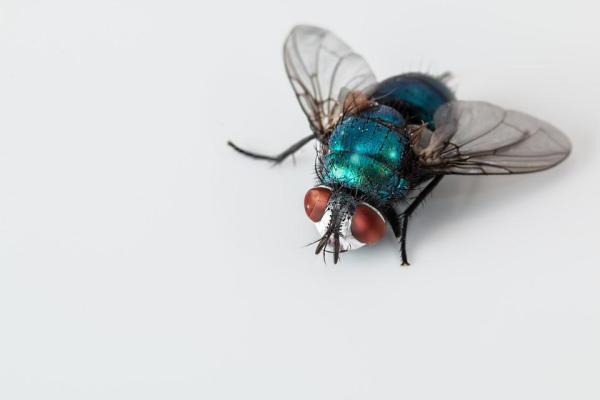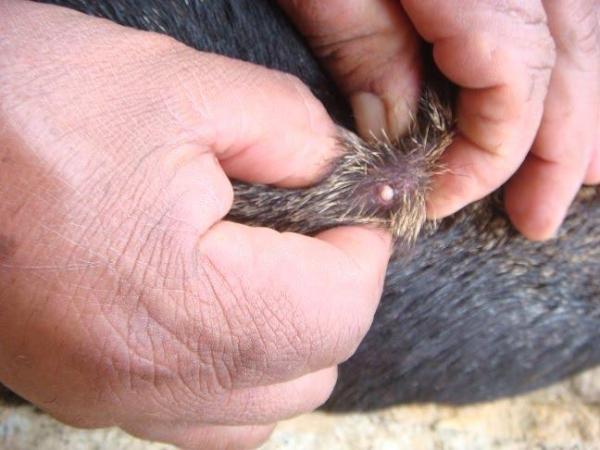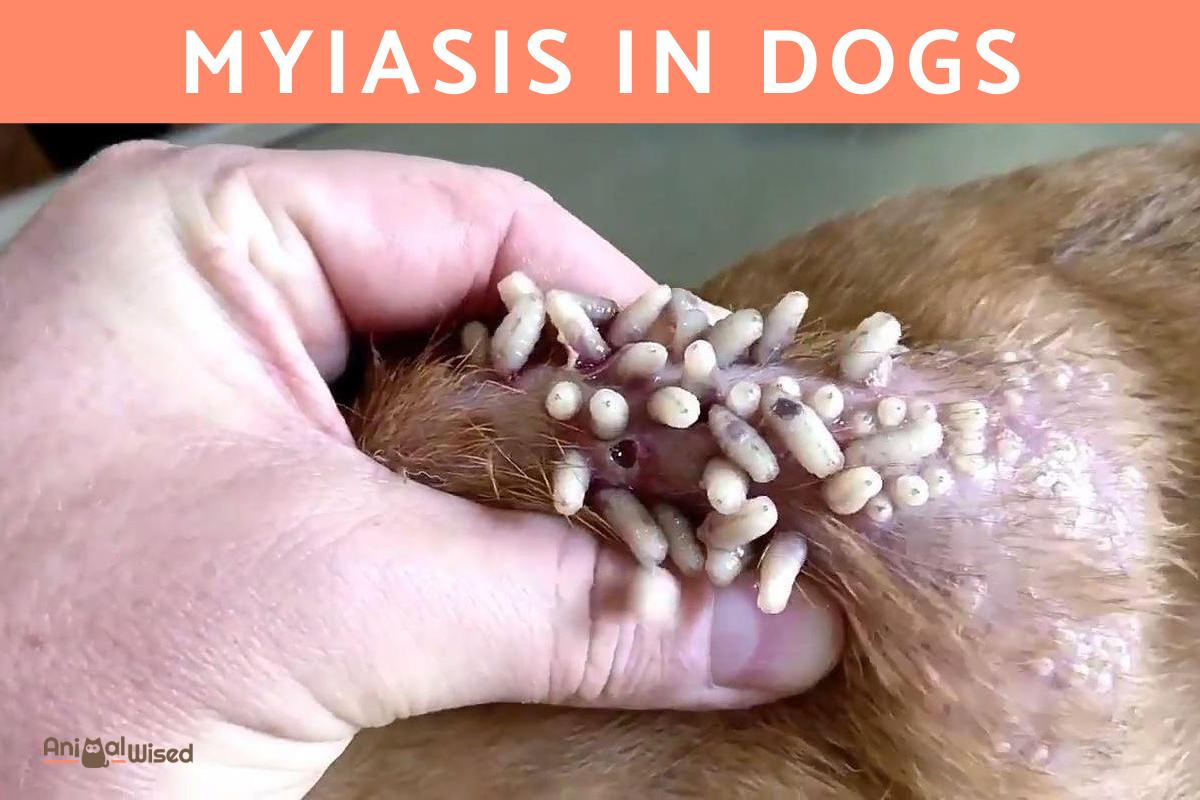Maggots in Dogs - Canine Myiasis



See files for Dogs
Maggots in dogs occur when a fly imbeds eggs into the skin of the animal which later develop into larvae. It is these larvae of various fly species which are known as maggots. When this occurs, it is known as canine myiasis. Various Diptera species can infest dogs with their larvae. While most do so through open skin such as wounds, certain dipterous species can actually break the skin and infest the dog. When the eggs hatch, the larvae develop by feeding on the tissue of the animal, something which can be very dangerous. With all this food readily available, the maggots can proliferate to great size and numbers.
If you have observed any maggots in dogs, it is vital you take the animal for veterinary consultation immediately. AnimalWised looks at the causes and treatment of canine myiasis to understand what you might expect. We also look at the potential for contagion and any other factors you may need to consider.
What is canine myiasis?
In 1840, English entomologist F.W. Hope was the first to use the word ‘myiasis’ to define this infestation of Diptera species in humans. It wasn't until almost a century later when Fritz Zumpt published Myiasis in Man and Animals In The Old World (1964) which provided a detailed description of maggots in dogs. It was Zumpt who first suggested that insects spent time feeding on a hosts dead tissue, bodily fluids or ingested food.
In their adult stage, these insects take advantage of the orifices or wounds of a host. They enter these openings to deposit their eggs as a way to continue their biological life cycle. It can sometimes happen that certain species are able to penetrate through intact dermis. This is the case with the following Diptera species:
- Bot fly (Dermatobia hominis): better known for infesting humans, this bot fly can also infest other mammalian species, including your dog.
- Primary screwworm flies (Cochliomyia spp.): certain species of this genus will feed on living tissue. The term ‘screwworom’ is in reference to the maggots of this species which have mouths that dig into surrounding tissue.
- Tumbu fly (Cordylobia anthropophaga): also known as the mago fly, maggots of this species develop on the ground and crawl towards their host. They are only known to affect areas of subtropical Africa.
- Warble flies (Hypoderma spp.): they most commonly attack the front limbs of animals. They eventually emerge from the skin and cause horrible holes to appear. Can be a reason why a dog limps on their front leg.
Even though they will be caused by different types of myiasis, this pathology can affect all types of vertebrate animals in any region. They are particularly prevalent during the wettest months of the year. While they are not known to cause maggots in dogs, find out whether blue bottles are dangerous.

What causes maggots in dogs?
There are three different criteria used to classify the types of myiasis in dogs. In this section, we will mention the species that cause myiasis by laying eggs in the skin of a dog:
Clinical point of view:
- Traumatic myiasis: this occurs when eggs are deposited into the open wounds of dogs which have been caused by various types of trauma. Insects that cause this type of canine myiasis include Megaselia rufipes, Chrysomyia albicans, Phormia regina, Calliphora spp., Lucilia spp., Sarcophaga spp. and Wohlfahrtia magnifica.
- Ocular myiasis: this is the larval infestation of the eye and is also known as ophthalmomyiasis. Insects which infest the eye include O. ovis, R. purpureus, M. scalaris, W. magnífica and S. carnaria.
- Auricular myiasis: similar to ophthalmomyiasis, except the infestation enters the ear cancal. These include O. ovis and W. magnifica.
- Nasal, buccal and sinus myiasis: this is when the infestation affects the nasal passages, mouth and sinuses, respectively. They include W. magnifica, Sarcophaga carnaria, Calliphora vomitoria, Oestrus ovis and Rhinoestrus purpureus.
- Anal and vaginal myiasis: when the infestation occurs in the anal and vaginal canals, respectfully. They incldue W. magnifica, S. carnaria and Sarcophaga pernix.
Reproductive behavior
If we look these different species of fly that cause maggots in dogs, we can see there are ways they can affect dogs. Generally speaking, these are grouped as the following:
- Compulsory or specific myiases: dipterous parasites that need a host for development in their larval phase.
- Semi-specific myiases and accidental myiasis: here we mention insects that usually infest decomposing bodies or organic matter. It may happen that they opportunistically invade living tissue.
Invasion processes
In a similar way, we can group these maggot-causing species according to how they infest the host:
- Primary invader: penetrate the skin or take advantage of holes in the body's natural orifices.
- Secondary or tertiary invader: take advantage of wounds and traumas.
Learn more about how maggots are spread with our article on whether flies bite humans.
What is the life cycle of a maggot in dogs?
Diptera insects responsible for causing myiasis usually have different phases in their biological cycle. They travel through a complete four-stage metamorphic cycle, the egg, larva, pupa and adult stages. In the last two phases they do not live in the host.
The larvae secrete an enzyme that can damage the dermis and cause various different health problems. If left untreated, the wound will increase in size and a dark discharge will appear. This can cause the attraction of other Diptera. Additional maggots will then also begin to deposit their eggs which creates a refuge or breeding ground for other types of worms in a dog.

Are all dogs likely to get myiasis?
Any animal that does not receive adequate medical prevention measure or hygiene control is susceptible to myiasis. The most important way to prevent this type of parasitic disease is to implement proper deworming treatment in dogs. This means animals that are abandoned, sick, convalescent or live in wet and dirty environments are more predisposed to maggot infestation.
Symptoms of maggots in dogs
Although we have gone into the specific types of myiasis in dogs, we can group them into the general categories of cutaneous, cavitary, systemic and wound. In some cases, symptoms are less apparent than in others. There are also several different cases of cutaneous myiasis, including furuncular, rampant, traumatic and serpiginous. Cutaneous myiasis can also progress systemically, infecting various organs as it does so.
In the early stages of a myiasis infestation, you might notice a small bite, lesion or abscess in the dog's skin, usually in a hairless area. You will later notice this wound grows and a pustule will form from where bloody fluid emerges.
It is only once the eggs have hatched and the larvae have been able to develop that we will see actual maggots in the dogs skin. Even in these cases, the maggots may have developed a long time before we notice the actual larvae. It also depend son whether the skin is open. If the fly infests maggots into an open wound, we can see into the tissue. With subcutaneous infestations, the maggots may grow under the skin, but not be visible to us.
Pay attention to these symptoms of myiasis in dogs:
- Ulcers
- Boils
- Skin irritation
- Skin lesions
- Movement of worms
- Edemas
- Fever
- Intense itching
- Ear movements
- Pain
- Discomfort
- Scrape
- Excessive licking
- Diarrhea
- Anorexia
At this point, and if left untreated, the maggots can penetrate deeper into the dermis layer. It will then form nodules or simply create a much larger abscess. This process can lead to the a serious infection and in some cases, even toxic shock or sepsis.
Learn more about abscesses in dogs with our related article.

Diagnosis of maggots in dogs
Diagnosis only requires a simple physical examination by a veterinarian to achieve diagnosis. This will be due to the presence of maggots in the dog's skin, eyes, ear canal or other infested area. If you notice any of these symptoms in your dog or assume that your dog has been infected we suggest visiting your veterinarian as soon as possible. A professional will be able to diagnose and treat the myiasis accordingly.
Treatment of maggots in dogs
Treatment of myiasis in dogs should always be done under the supervision of a veterinarian. These small carnivorous maggots can cause secondary pathologies, so you should never try to treat canine myiasis without the help of a specialist.
The first step in treating myiasis in dogs is cleaning and disinfecting the area. Some specialists choose to directly perform the extraction of maggots and clean the wound after, but this will be at their own discretion.
How to remove maggots from dogs
The removal of worms in wounds should always be done with the use of a clamping tool such as tweezers. It is a laborious and slow process. in areas where there is little funding, veterinarians may try to remove the maggots from the dog by hand. This is not ideal as it can further damage tissue, as well as break the larvae while trying to remove them from the parasite-infested area. This process might need to be repeated several times.
Use of antiparasitic drugs and hygiene.
After removing the fly larvae, a veterinarian will shave the affected area to prevent bacteria or eggs from remaining on the fur and dermis. They will then apply an antiseptic solution, and remove any dead tissue in favor of skin healing.
A local antibiotic and an aerosol or paste which is used to kill maggots should then be applied. Permethrin for dogs is a common insecticide used for this purpose. Finally, the affected area should be bandaged to keep it clean and prevent further contamination.
In some cases, it may be necessary for a vet to prescribe the dog with some antibiotics for dogs, fluid therapy or other measures appropriate for the individual case. Sometimes, if the infestation is quite severe, you might have to visit a veterinarian more than once to remove and treat the maggot-infested area.

Can maggots in dogs be transmitted to humans?
As mentioned before, myiasis can affect any vertebrate animal. Therefore, myiasis can be transmitted to humans.
People who live in a home with a dog that is suffering from myiasis should take certain precautions in order to avoid possible parasitization. It is essential to monitor any wound and cover it, remain incredibly hygienic, use insect repellents and avoid dense, wet and hot areas. You should be extra careful if you have a baby, are sick or are elderly.

Prevention of canine myiasis
Although myiasis is not a common problem in large cities, it is more prevalent in rural areas where dogs regularly flock to rivers and forests. In terms of myiasis prevention, it is sufficient enough the simply check the dermis of your dog regularly, paying special attention to hairless areas.
Maintaining a good level of hygiene, including brushing and bathing your dog regularly will also be an important factor. This will help you notice promptly if your dog has been bitten, which will prevent more serious complications such as maggots in dogs. In addition, you should always follow your dog’s deworming and vaccination schedule strictly.
It is also very important to go to the veterinarian as soon as you notice any symptoms mentioned above. This is especially so if itching, scratching and the appearance of infected wounds occur.

This article is purely informative. AnimalWised does not have the authority to prescribe any veterinary treatment or create a diagnosis. We invite you to take your pet to the veterinarian if they are suffering from any condition or pain.
If you want to read similar articles to Maggots in Dogs - Canine Myiasis, we recommend you visit our Parasitic diseases category.
- Soler Cruz, M. D. (2000) El estudio de las miasis en España durante los últimos cien años. Departamento de Parasitología. Facultad de Farmacia. Campus de Cartuja. Universidad de Granada. 18071 Granada.
- R. Farkas, Hall, M. J. R., Bouzagou, A. K., Lhor, Y., & Khallaayoune, K. (2009). Traumatic myiasis in dogs caused by Wohlfahrtia magnifica and its importance in the epidemiology of wohlfahrtiosis of livestock. Medical and Veteriny Entomology, 23(1), 80–85.
- Schnur, H. J., Zivotofsky, D., & Wilamowski, A. (2009). Myiasis in domestic animals in Israel. Veterinary Parasitology, 161(3–4), 352-355
- Falconí Flores, M. A. (2013) Uso de nitenpyram en el tratamiento de miasis en perros en los valles aldeñaos a quito. Universidad de las Américas, Facultad de ciencias.










